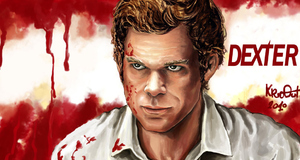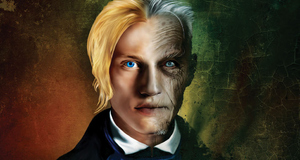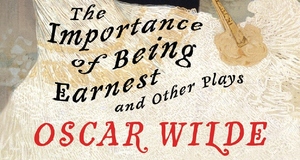A Duet for Christ and Dionysus:Tragedy in the Ideas of Friedrich Nietzsche and Oscar WildeThe Soul of Dionysus and the Body of ApolloAlthough for Wilde (1996) Christ is the supreme tragic figure, like Nietzsche (2000a) he traces the philosophical origin of tragic art back to the ancient Greek conception of the dichotomous human spirit. Contemporary art for Nietzsche and Wilde is severed from nature by its failure to capture the essence of the human spirit as it exists in nature, utilizing rather analytically abstract concepts as its primary subject matter. Wilde writes about Greek art: We call ours a utilitarian age, and we do not know the uses of any single thing. We have forgotten that water can cleanse, and fire purify, and that the earth is mother to us all. As a consequence our art is of the moon and plays with shadows, while Greek art is of the sun and deals directly with things. I am sure that in elemental forces there is purification, and I want to go back to them and live in their presence. (p. 90) For Nietzsche and Wilde, in Greek art the tragic audience experiences nature as it really is, as tragedy is the genre that is most authentic to nature. For both of them, nature is suffering. Suffering has its metaphysical origin in the human spirit that is tyrannized by the competing impulses towards order and chaos, the Apollonian and the Dionysian, which classical tragedy is purposed to reconcile. Wilde identifies the birth of tragedy in Dionysus, writing in De Profundis that the most suggestive figure from Greek mythology concerning art is Dionysus, “the son of a mortal woman to whom the moment of his birth had proved also the moment of her death” (p. 61). Although the knowledge that Greek tragedy evolved from the Dionysian dithyramb, which is implied even in Aristotle’s Poetics (Easterling, 1997, p. 39), was a well-established theory in nineteenth-century philology, Wilde recognizes the essential role of the natural though contradictory impulses in the human spirit in Greek tragedy, indicating the beginning of a profound convergence in his and Nietzsche’s ideas.For Nietzsche (2000a) and Wilde (1996), the cultivation of the individual as a work of art is achieved through the reconciliation of these contradictory impulses, reflected in the relationship between appearance and meaning (or essence) in art. Nietzsche writes in The Birth of Tragedy, “[u]nder the charm of the Dionysian not only is the union between man and man reaffirmed, but nature which has become alienated, hostile, or subjugated, celebrates once more her reconciliation with her lost son, man” (p. 37). The reconciliation of the Apollonian to the Dionysian dissolves the apparent barriers between individuals by uniting them according to their shared nature as sufferers. When addressing the human being as a work of art, Wilde represents the dichotomy of appearance and essence in terms of the “body” and the “soul.” The dynamic between the body and the soul is an overarching motif in De Profundis that draws together its two sections, the first being Wilde’s account of his relationship with Douglas and the second being Wilde’s explication of his Christ-centered theory of art. “What the artist is always looking for,” Wilde writes, “is the mode of existence in which body and soul are one and indivisible: in which the outward is expressive of the inward: in which form reveals” (p. 52). Wilde never defines his dichotomy of the “body” and the “soul” as clearly as Nietzsche defines the Apollonian and the Dionysian at the center of his aesthetic philosophy, and so the body-soul dichotomy remains “hazy,” to use Hext’s (2011) term, encompassing all of Wilde’s ideas although rather vaguely, not unlike his depiction of Christ. However, over the course of De Profundis, it becomes clear that the soul is the individual’s essence as a sufferer, and that the body is the individual’s outward aesthetic appearance. Such is the case in Wilde’s depiction of Christ in terms of the body-soul dichotomy: God had given [Christ] at his birth the soul of a poet, as he himself when quite young had in mystical marriage taken poverty as his bride: and with the soul of a poet and the body of a beggar he found the way to perfection not difficult. (p. 67) Christ, the ultimate artist, assumes the appearance of a beggar because he has within him the soul of one who sufferers as a beggar suffers. Like the Dionysian, the soul is the inward essence of the individual; the body, like the Apollonian, is the artistic appearance of the individual as he or she appears outwardly to the world. For Nietzsche and Wilde, the artist’s purpose is to accurately render the individual’s essence as a sufferer in his or her appearance as a work of art—an authentic, whole individual. Individual appearances must be reconciled to humanity’s shared essence in suffering, thereby dissolving the boundaries between individuals. Wilde (1996) writes that, prior to his experiences in prison, “the gods had given [him] almost anything,” and that his affluence provided him with the means for cultivating the decadent persona which ultimately culminated in his downfall: But I let myself be lured into long spells of senseless and sensual ease. I amused myself with being a flaneur, a dandy, a man of fashion. I surrounded myself with the smaller natures and the meaner minds. I became the spendthrift of my own genius, and to waste an eternal youth gave me a curious joy. . . . I grew careless of the lives of others. I took pleasure where it pleased me, and passed on. . . . I was no longer the captain of my soul, and did not know it. I allowed pleasure to dominate me. I ended in horrible disgrace. (pp. 44-45) Prior to Reading Gaol, Wilde fashioned himself as an individual according to superficial social and material possessions. Wilde, who as an artist is most essentially a playwright, lived permanently as an actor on the stage, treating all those in his company as his spectators. His self-fashioning as a work of art depended upon the reception of his stage-appearance by an audience that consisted, at the height of his celebrity, of the general public, the “smaller natures and meaner minds” of which Wilde writes. One such “smaller mind,” the one proved to be the most instrumental in his downfall, was Lord Alfred Douglas himself, to whom Wilde writes in De Profundis that it “did not occur to me that you could have the supreme vice, shallowness.” (pp. 31). John Quintus (1991) notes that Wilde’s “own experience accounts for his return to the dreadful consequences individuation invites, for Wilde knew that his eccentricity, his egotism was largely responsible for his downfall” (p. 524). In “The Decay of Lying,” Wilde (2003a) writes that life “holds the mirror up to Art, and either reproduces some strange type imagined by painter or sculptor, or realizes in fact what has been dreamed in fiction” (p. 1085). Yet it was Wilde himself who had become a mirror held up to his own audience, a reflection of the shallowness of the public according to whose standards he fashioned himself as a work of art. Wilde’s (1996) betrayal by the public, the same public that once fawned over the antics of his decadent displays and delighted in his popular plays, yet jeered and spat at him from the boarding platform during his transfer from Wandsworth Prison to Reading Gaol, demonstrated to Wilde the consequence of investing his self-worth as a work of art in his reception by the public, which Nietzsche vindictively labels the “herd” that must be resisted at all costs. In The Case of Wagner, Nietzsche (2000b) writes that “wherever the decision comes to rest with the masses, authenticity becomes superfluous, disadvantageous, a liability. Only the actor still arouses great enthusiasm” (p. 635). Art decays when its representation of life “no longer dwells in the whole” (p. 626) that is nature, when it instead ascends from an artificial pose, a lie chosen by the artist, who is now merely an actor, and is performed on the stage of life. Such an actor Wilde was; whereas Nietzsche diagnoses decadence as a disease in art, the pre-prison Wilde adopts decadence as his definition of art—art as a lie against nature. In terms of aesthetics, the pre-prison Wilde is essentially the antithesis to Nietzsche. Like all stark polarities that meet on the converging point of a circle, Nietzsche and pre-prison Wilde even resemble one another in the language of their discourse; Nietzsche characterizes the decadent artist as an actor, and Wilde the decadent artist embraces this label, delivering himself as the starring actor. And so, the pre-prison Wilde (1996), as depicted in De Profundis, succumbs to the disease that Nietzsche alone correctly diagnoses, necessitating his re-evaluation of his nature as an artist. The body-soul dichotomy provides Wilde with a context for understanding and presenting his subsequent refashioning as an artist in Christ. Wilde indicates that what he lost in prison—his name, position and wealth that sustained his decadent persona—belonged to the body, leaving his soul bare: It was of course my soul in its ultimate essence that I had reached. In many ways I had been its enemy, but I found it waiting for me as a friend. When one comes into contact with the soul it makes one simple as a child, as Christ said one should be. (p. 59) Wilde, deprived of all the agents that once defined him as a work of art—his stage-act, in other words—stripped by pain and suffering of the Apollonian superficialities that once comprised his ego, discovers his soul by suffering among other sufferers. Wilde refashions himself as an artist according to new discoveries made about his own soul, according to his essence as one who suffers as Christ suffered. Wilde writes that, in his poverty-reduced state, “had [he] to accept the wallet and ragged cloak of sheer penury . . . [he] would be able to face the life with much more calm and confidence than [he] would were my body in purple and fine linen, and the soul within [him] sick with hate” (p. 46). Here Wilde addresses the prospect of refashioning his appearance to compliment his newly-discovered soul. The Wilde (2003b) who once wrote in The Importance of Being Earnest that “[i]n matters of grave importance, style, not sincerity is the vital thing” (p. 406) has died. As the moment of Dionysus’ birth is simultaneously a moment of death, the birth of Wilde as an artist in Christ marks the death of Wilde the aesthete. Thus, in prison, Wilde (1996) aligns himself much more closely to a Dionysian understanding of art as reconciliation to, rather than a flight from, one’s own nature. Wilde (2003a) opens “The Decay of Lying” with charges against nature that she is ugly and provides no fit model for the creation of art, writing that what “Art really reveals to us is Nature's lack of design, her curious crudities, her extraordinary monotony, her absolutely unfinished condition” (p. 1174). There is no greater contrast in aesthetics between the character Vivian’s (who functions as a mouthpiece for Wilde in the work) opening argument in The “Decay of Lying” and Wilde’s demand in De Profundis for a “Greek art” that is “of the sun and deals directly with things” (90). In De Profundis, for Wilde (1996) art is no longer a creative lie, but rather the direct expression of one’s soul that allows one to become a whole individual, unified in essence and appearance. Wilde writes that it is tragic how few people ever possess their souls before they die. . . . Most people are other people. Their thoughts are someone else’s opinions, their lives a mimicry, their passions a quotation. Christ was not merely the supreme individualist. He was the first individualist in history. (p. 59) The many people who never possess their souls—such a person as Wilde himself once was—are un-Dionysian works of art. If one fashions for him- or herself an appearance that is not authentic to his or her own soul, one will appear to be somebody else; such a person is merely the imitation of an individual. Suffering—or, expressed as a high art form, tragedy—is the only proper setting for the reconciliation of these dualities. Wilde (1996) writes that he “now see[s] that sorrow, being the supreme emotion of which man is capable, is at once the type and test of all great art” (p. 52). For Nietzsche (2000a) and Wilde, the individualist is essentially one who suffers and refashions himself as a whole person in confrontation with suffering. In taking up suffering as its subject matter, tragic art, more than any other genre, addresses the individual according to his or her nature. “Behind joy and laughter there may be a temperament, coarse, hard and callous,” writes Wilde. “But behind sorrow there is always sorrow. Pain, unlike pleasure, wears no mask” (p. 52). Yet for Nietzsche, the Dionysian and Apollonian are perpetually antagonistic towards one another, achieving only brief harmony in tragic art before they are again rent asunder by a return to the trifles of ordinary life. Harmony is achieved through the reconciliation of meaning to medium; in tragic art, for a time, the Apollonian truly binds, rather than merely cloaks, Dionysian suffering. For Wilde, the reconciliation of the body to the soul is Christ’s creative project to produce permanent individuals by making them whole in rechanneling creativity from traditional artistic media to the human medium. In The Picture of Dorian Gray, the sins of Dorian, who is essentially a fictional stand-in for Wilde (2003c) himself, afflict his portrait. This fallen relationship between art and humankind is repaired by Christ, so that the human becomes the artistic project akin to his portrait. For Nietzsche and Wilde, life is redeemed by the transformation of the artist into a work of art—the reconciliation of the Dionysian and the Apollonian, the soul and the body—which culminates in the human as a whole being. Tragic art further fosters this reconciliation by facilitating distance from one’s suffering, thus enabling the individual to become his own tragic chorus in order to contemplate suffering in an aesthetic light that elicits joy. Apollonian elements in art render suffering a beautiful phenomenon, and the Dionysian elements show suffering to be a universal phenomenon in which all humans participate, thus bringing the audience to perceive reality through the lens of aesthetics. Scholars who portray Nietzsche (2000a) as a champion of the individual will at the cost of collective interest overlook the communal spirit of the Dionysian man who overcomes his singularity by means of shared suffering, clearing away illusions of separateness from nature and humankind. Nietzsche writes, “[t]he ecstasy of the Dionysian state, with its destruction of the customary manacles and boundaries of existence, contains, of course, for as long as it lasts a lethargic element, in which everything personally experienced in the past is immersed” (p. 87). Human boundaries based on past histories are dissolved. For Wilde (1996) also, art is the basis for the reinterpretation of the past, the facilitator of distance between the individual and his sins. In The Picture of Dorian Gray, Wilde (2003c) warns against the danger of aesthetic distancing, which results in moral disregard towards others. Dorian’s justifies the event of his fiancée’s death as a dramatic event in the tragic play that is his life: “This thing that has happened does not affect me as it should,” he claims. To Dorian, it seems “to be simply like a wonderful ending to a wonderful play. It has all the terrible beauty of a Greek tragedy, a tragedy in which I took a great part, but by which I have not been wounded” (p. 80). However, Wilde (2003) wrote The Picture of Dorian Gray before to his experiences in Reading Gaol, where Wilde (1996) committed himself to Christ as the encompassing subject of his art. In Christ, aesthetic distancing is not a descent into immorality, but is rather part of the process of suffering that cultivates beautiful, compassionate individuals. As a secular model, Christ does not save humanity by morally cleansing the world of sin, but rather by allowing the reinterpretation of one’s sins as an artistic process of becoming a moral individual. This secularized doctrine of sin is particularly clear in Wilde’s retelling of Christ’s parable of the prodigal son: [The Greeks] often say in their Gnomic aphorisms, ‘Even the Gods cannot alter the past.’ Christ showed that the commonest sinner could do it, that it was the one thing he could do. Christ, had he been asked, would have said – I feel quite certain about it – that the moment the prodigal son fell on his knees and wept, he made his having wasted his substance with harlots, his swineherding and hungering for the husks they ate, beautiful and holy moments in his life. It is difficult for most people to grasp the idea. I dare say one has to go to prison to understand it. If so, it may be worth while going to prison. (p. 67) In Wilde’s interpretation, the sins of the prodigal son are justified because they facilitated the prodigal son’s return to his father, his repentance and forgiveness. Sin is the prerequisite for forgiveness; therefore, sin is the prerequisite for beauty. In “The Soul of Man Under Socialism,” Wilde (2003d) applies a similar hermeneutic to the story of the adulteress to argue that “Jesus said that her sins were forgiven her, not because she repented, but because her love was so intense and wonderful” (pp. 1180-1181). As with Nietzsche, for Wilde art justifies life. However, whereas Nietzsche’s (2000a) aesthetics are entirely beyond good and evil and in later works he harshly criticizes Christian morality on grounds of being otherworldly and therefore anti-life, Wilde aestheticizes the morality of Christ, thus justifying morality, in addition to life itself, as an aesthetic phenomenon. The Role of HamletBoth Nietzsche (2000a) and Wilde (1996) fashion the tragic hero in abstract principles, and therefore seek to provide a model for how to live the tragic life. Although Nietzsche submits Sophocles’ Oedipus and Aeschylus’ Prometheus as examples of Dionysian man, his analysis of Shakespeare’s Hamlet, the tragic hero par excellence despite his distance from classical Greece, at the end of Section Seven of the Birth of Tragedy stands as one of the most brilliant passages in the entire book. In his footnote to this passage in The Birth of Tragedy, Walter Kaufmann (2000a) comments that here, “[h]aving finally broken loose from Schopenhauer, Nietzsche for the first time shows the brilliancy of his own genius. It is doubtful whether anyone before him had illuminated Hamlet so extensively in so few words . . .” (p. 80). Likewise, Harold Bloom (1998) proclaims that “in The Birth of Tragedy, Nietzsche got Hamlet memorably right as the man who thinks too well” (p. 393). Simply, Nietzsche’s Hamlet embodies the repercussions of Dionysian insight into reality: Both have once looked truly into the essence of things, they have gained knowledge, and nausea inhibits action; for their action could not change anything in the eternal nature of things; they feel it to be ridiculous or humiliating that they should be asked to set right a world that is out of joint. (p. 80) Conventional interpretations read Hamlet as a figure plagued by possibilities and consequently hesitant to act. According to Nietzsche, Hamlet’s flaw is not petty procrastination, but a nauseating awareness of eternity that exposes the futility of all motivations and actions operating in the world of appearances. “Knowledge kills action,” (p. 80) writes Nietzsche. The Dionysian hero, realizing that his actions in history bear consequences that do not, in fact, ripple across eternity, perceives all actions as futile. For him, actions in to the temporal world become unnecessary. Although Wilde (1996) champions Christ as the ultimate tragic figure, Wilde’s Christ is still too mysterious and otherworldly—human, but not all too human—to serve as a model for living on the tragic stage. Therefore, Wilde resorts to the same model as does Nietzsche (2000a), even interpreting Hamlet along similar lines: He is a dreamer, and he is called upon to act. He has the nature of the poet, and he is asked to grapple with the common complexity of cause and effect, with life in its practical realization, of which he knows nothing, not with life in its ideal essence, of which he knows so much. (p. 84) Wilde and Nietzsche interpret Hamlet as a displaced poet who sees beyond and is consequently nauseated by the Apollonian, and in longing to transcend the world of appearances seeks to transform his life into eternal art. Wilde’s observation that Hamlet “keeps playing with actions as an artist plays with theory . . . Instead of trying to be the hero of his own history, he seeks to be the spectator of his own tragedy” (p. 84) resonates strongly with Nietzsche’s claim that “[art] alone knows how to turn these nauseous thoughts about the horror or absurdity of existence into notions with which one can live” (p. 80). Hamlet demonstrates to both Nietzsche and Wilde that, although the individual cannot direct his destiny in the harsh world or tragedy, he does have the agency to creatively interpret his life as to render it an aesthetic phenomenon—and in doing so, triumph over nihilism. As David Foster (2001) observes, Wilde’s main purpose in De Profundis is to demonstrate that he is still an agent in a world that has deprived him of all agencies (p. 87)—except for the agency to creatively interpret his own becoming, which Wilde correctly interprets (and, like Hamlet, spectates) as a tragedy. And so, Wilde becomes his own tragic chorus.Continued on Next Page » Suggested Reading from Inquiries Journal
Inquiries Journal provides undergraduate and graduate students around the world a platform for the wide dissemination of academic work over a range of core disciplines. Representing the work of students from hundreds of institutions around the globe, Inquiries Journal's large database of academic articles is completely free. Learn more | Blog | Submit Latest in Literature |


















